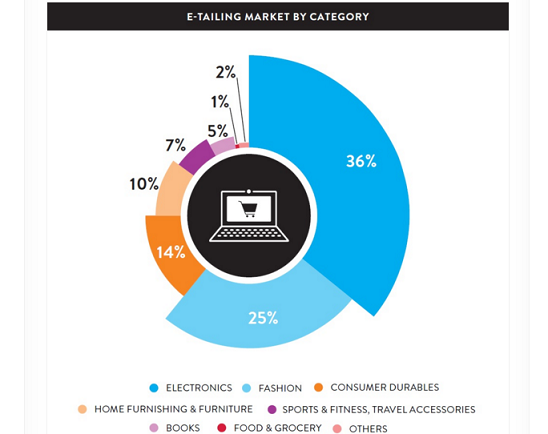
 Interdependence – when two industries can work closely together towards building efficiency and driving growth – is now more of a strength than a weakness. However, it’s also a relatively recent phenomenon in India. In the past, many Indian businesses would work to acquire all critical capabilities in-house to have absolute control. In the case of e-commerce, constantly rising consumer demands and stiff competition has forced industries to drive efficiencies through a renewed focus on logistics.
Interdependence – when two industries can work closely together towards building efficiency and driving growth – is now more of a strength than a weakness. However, it’s also a relatively recent phenomenon in India. In the past, many Indian businesses would work to acquire all critical capabilities in-house to have absolute control. In the case of e-commerce, constantly rising consumer demands and stiff competition has forced industries to drive efficiencies through a renewed focus on logistics.
THE ROLE OF E-COMMERCE LOGISTICS
For e-commerce to function efficiently, it is necessary to have a consistent logistics system that will provide support through warehousing, inventory, delivery, invoicing, handling cash-on-delivery and product-returns. The role of logistics in e-commerce is to reduce the risk that arises from the virtual relations.
Additionally, E-commerce logistics needs to reduce the risk in the relationship between the seller and the customer by ensuring that the right product is delivered to the right customer, at the right place and at the right time.
Moreover, unlike brick and mortar stores where delivery is immediate, e-commerce firms are still grappling with the challenge of the speed with which the ordered product reaches the customer. Logistics stand to play a key role in overcoming such disadvantages, enabling e-tailers to further grow and expand.
E-COMMERCE LOGISTICS: EMERGING TRENDS AND OPPORTUNITIES
While logistics is the biggest challenge in e-tailing, it is also the key differentiator between players and a critical link between e-tailers and customers. With e-commerce being in the midst of emerging macro trends, adapting logistics to accommodate these trends is likely to determine future success. The key trends in the e-commerce industry that are likely to enable growth in the logistics sector include:
The rising relevance of Tier 2 and 3 cities necessitates a wider presence of logistics. The sheer volume of cash-on-delivery (CoD) orders will require fundamentally different cash handling capabilities. Off line retailers moving to online channels will require significant fulfilment capabilities. A shift of focus to surface movement will create a need to develop a strong multi-modal mix. Emergence of new categories will increase complexity, requiring accurate weight reconciliation systems, and the creation of new opportunities.
E-COMMERCE GROWTH SET TO ACCELERATE
E-tailing, which consists of online retail and online marketplaces, has been the fastest-growing segment in e-commerce, having grown at a CAGR of approximately 56% from 2009 to 2014. The future continues to look bright with the size of the e-tail market being pegged at US $6 billion in 2015. Within e-tailing, electronics, consumer durables, fashion and books account for about 80% of product distribution.

The Indian logistics and warehousing industry is anticipated to grow at a CAGR of 10% to 12% from 2015 to 2019. Third-party logistics provider (3PL), e-commerce logistics and cold chain will continue to be the three biggest segments of the overall logistics industry. The need to deliver items quickly—on time or same day delivery — due to the popularity of CoD, has compelled the logistics industry to change from traditional logistics support to handling the new and nuanced logistics requirements of e-commerce companies. In fact, many of the earlier players are also diversifying their services portfolio to make space for e-commerce logistics. The increasing contribution by e-commerce logistics, government’s encouragement of domestic entrepreneurship and the rise in domestic consumption will help pave the way for further growth of the logistics and warehousing industry in the years to come.
